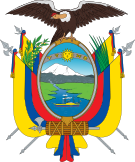| ||||||||||||||
| ||||||||||||||
| ||||||||||||||
 |
|---|
Presidential elections were held in Ecuador in 1856. [1] The elections were held using an electoral college, and resulted in a victory for Francisco Robles, who received 60% of the vote. [1] He took office on 1 September. [2]
| ||||||||||||||
| ||||||||||||||
| ||||||||||||||
 |
|---|
Presidential elections were held in Ecuador in 1856. [1] The elections were held using an electoral college, and resulted in a victory for Francisco Robles, who received 60% of the vote. [1] He took office on 1 September. [2]
| Candidate | Votes | % |
|---|---|---|
| Francisco Robles | 514 | 59.70 |
| Manuel Gómez de la Torre | 292 | 33.91 |
| Manuel Bustamante del Mazo | 37 | 4.30 |
| Francisco Aguirre Abad | 9 | 1.05 |
| Other candidates | 9 | 1.05 |
| Total | 861 | 100.00 |
| Valid votes | 861 | 98.74 |
| Invalid/blank votes | 11 | 1.26 |
| Total votes | 872 | 100.00 |
| Source: Cevallos [3] | ||